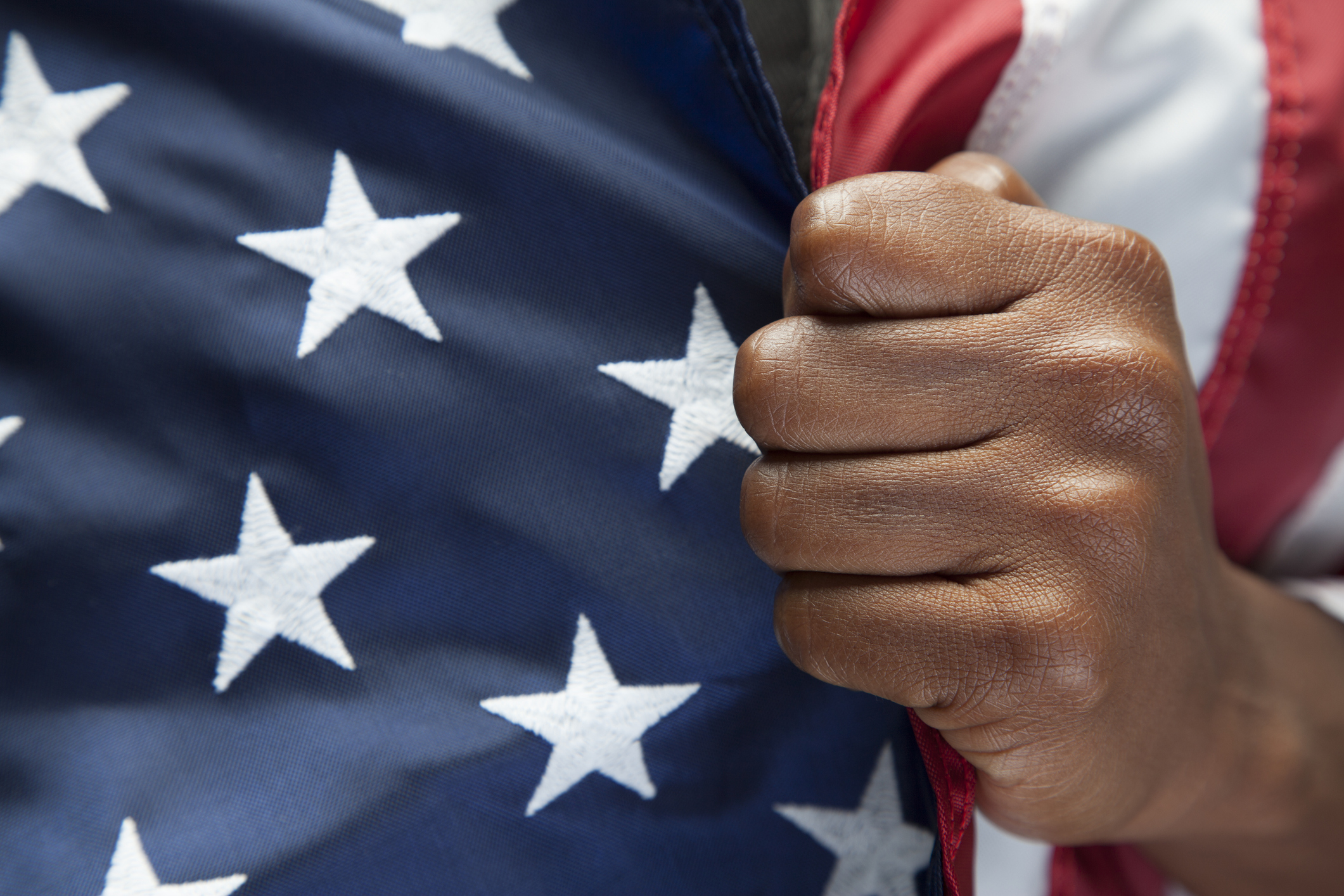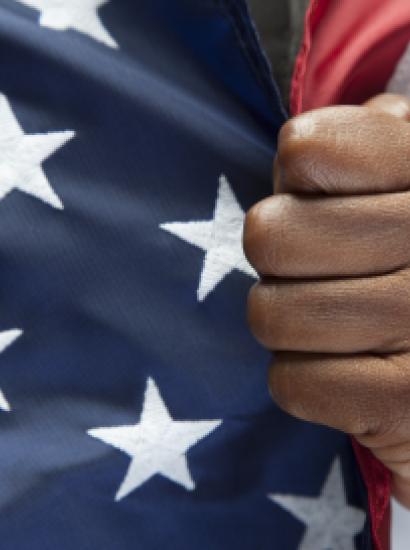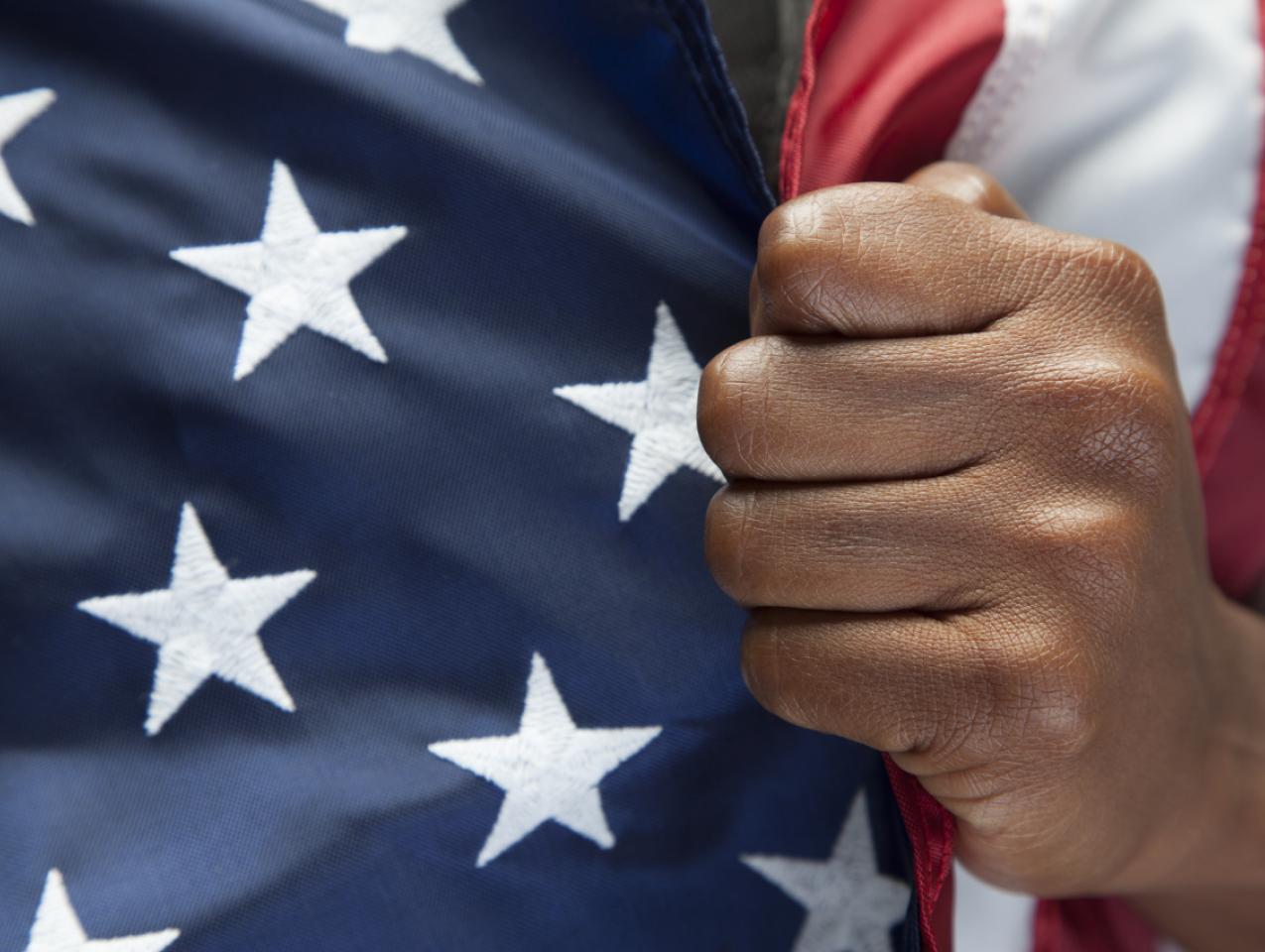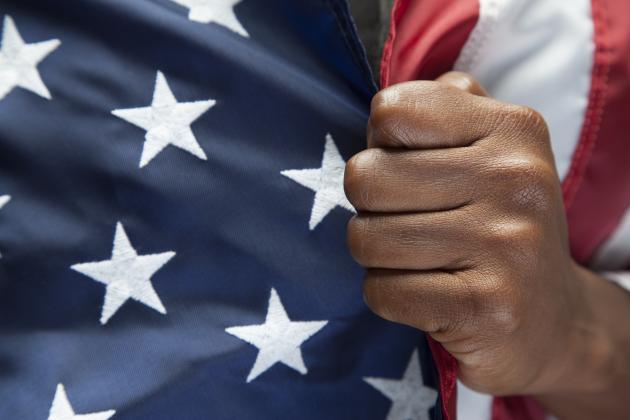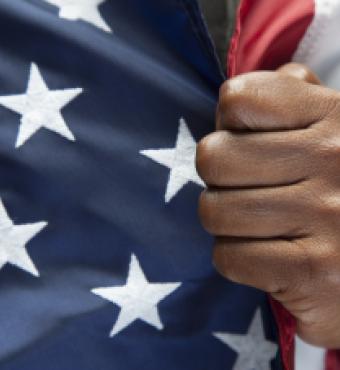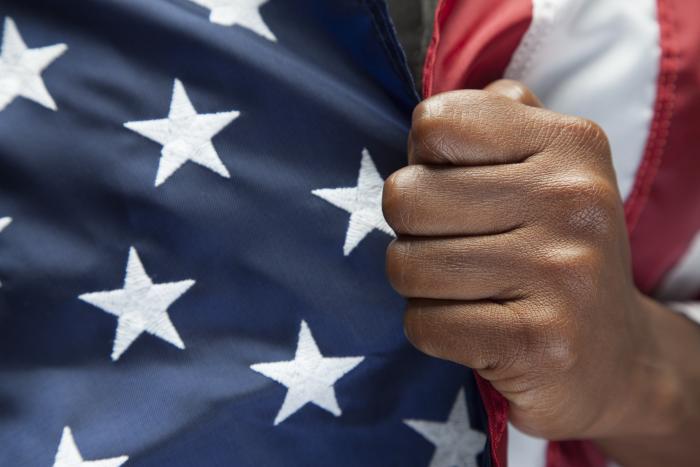- Politics, Institutions, and Public Opinion
- State & Local
- California
- Law & Policy
- Civil Rights & Race
As we’re about to close the books on Black History Month in America, I’d like to offer a few thoughts on the African American existence in present-day California.
On the one hand, the Golden State has a proud heritage when it comes to Black progress—especially in the realm of civil rights and shattering barriers.
Jackie Robinson wasn’t a native Californian (his family relocated to the West Coast, from Georgia, a year after his birth), but he was raised in Pasadena and, prior to breaking major-league baseball’s color barrier, excelled on the playing fields of UCLA—well before Robinson’s Brooklyn Dodgers broke a different barrier, one of geography, by relocating to Los Angeles.
A Black Californian you likely haven’t heard of but likewise a landmark figure: Charlotte Brown, the Golden State’s 19th-century equivalent of Rosa Parks as a woman of color who took a stand by refusing to be removed from public transportation.
On an April Friday in 1863, on her way to a doctor’s appointment, Brown boarded a horse-drawn streetcar in San Francisco, only to be told that “colored persons” weren’t allowed (this was a decade before the city’s fabled cable cars came into operation).
Brown refused to budge, only to be physically removed from the car after the conductor and passengers had tried and failed, for three stops, to get rid of her.
What happened next: Brown and her father filed a lawsuit against Omnibus Railroad—a bold move considering that only recently had Black Californians been granted the right to testify in court against White Californians, just one of the many oddities of Civil War–era California being anti-slave but not antiracist (it took another 30 years for California to enact a statewide ban on streetcar segregation).
The Browns won their case—an original $25 award reduced to just a nickel after appeals, the same value as Charlotte’s streetcar ticket. But the story doesn’t end there. Charlotte Brown again would be removed from a streetcar. And again, she turned to the justice system.
This time, Brown was awarded $500—she’d sought $5,000 in damages—plus a strong rebuke from a sympathetic judge:
It has been already quite too long tolerated by the dominant race to see with indifference the negro or mulatto treated as a brute, insulted, wronged, enslaved, made to wear a yoke, to tremble before white men, to serve him as a tool, to hold property and life at his will, to surrender to him his intellect and conscience, and to seal his lips and belie his thought through dread of the white man’s power.
Charlotte Brown is not enshrined in California’s Hall of Fame (an institution whose short-sighted approach to state history has long bothered me). She would seem a logical replacement should San Francisco school officials proceed with the tragicomedy that is the desire to rid the town of the likes of George Washington and Abraham Lincoln (here’s a list of SFUSD schools).
The question today, amidst Black History Month: what more can be done for Black Californians —at present, just 6% of California’s population (versus 15% Asian American, 37% white and 39% Latino)?
I’d like to narrow the question to these categories:
Health. According to data released earlier this month by California’s Department of Public Health, Black Californians trail badly in terms of COVID vaccine distribution as sorted by race (the numbers: Whites 32.7%, Latinos 16%, multi-race 14%, Asian 13%, Black 2.9%). Thus, the phrase “equity is the call of this moment” has entered into California governor Gavin Newsom’s lexicon.
Here’s what the state’s vaccine allocation guidelines say under the heading of “equity”: “This age-based framework will be coupled with a vaccine distribution and engagement approach that prioritizes disproportionately impacted communities, settings, and populations to ensure those eligible for vaccines within these communities are more likely to receive it.”
Having reprioritized vaccine policy last month to emphasize age over occupation, would California implement yet another change to make racial affiliation a more immediate concern?
Exodus. Though California has never had a large Black population (percentagewise) the likes of Mississippi’s (38.7%) or Georgia’s (31.7%), the state did boast a population of nearly 8% as recently as 1980.
According to this CalMatters analysis of various federal estimates, 75,000 Black Californians left California in 2018, while 48,000 moved in. The three most popular changes of address for exiting Blacks: Nevada, Texas, and Georgia. As CalMatters notes, it reflects “both a national reversal of last century’s Great Migration and movement to emerging middle class hubs for black ownership, education and entrepreneurship.”
Where this leaves California: wrestling with such thorny problems as home ownership (according to the California Association of Realtors’ Housing Affordability Index, less than one in five Black California households could afford to purchase a $659,380 statewide median–priced home in 2022, compared to two in five White California households) and upward mobility (28% of black Californians live in poverty, according to US Census data, which is six points above the national average).
Education. Last June and in this same space, I offered some thoughts on the disturbing lack of progress in California public education:
Consider: at the time of the 1992 riots, the poverty rate for families in South Los Angeles was higher than it was at the time of the 1965 Watts riots (30.3% vs. 27%). Twenty-six percent of South LA youths ages 16 to 19 were high school dropouts; one in three adults had left school before finishing the ninth grade.
Let’s advance the calendar to 2020. African-Americans make up 8% of Los Angeles County’s population, yet they account for estimated 42% of the local homeless population; in South LA, the share of black households experiencing severe rent burdens approaches 50%.
Meanwhile, over half of South LA schools with the largest concentration of black students are rated “poor” in academic achievement; districtwide, in Los Angeles, only two out of ten African American students are proficient or at grade level in math, with only three out of ten proficient in English.
In 2021, the situation remains dire—or so this recent education data released by Stanford University suggests: the Black-White student achievement gap in San Diego is expected to double by 2026, with the same happening in Long Beach by 2031 and in Los Angeles by 2094. Is there a remedy, other than the Left and Right drawing their predictable battlelines (more money vs. greater choice)?
Leadership. In Kamala Harris, California has a 21st-century pioneer: the first woman of color to serve as the nation’s vice president and, prior to the November election, California’s first multiracial US senator and state attorney general (as it turns out, “Pioneer” is her Secret Service code name).
But how else does California’s Black leadership stack up?
At the top of the ladder would be California secretary of state Shirley Weber and state superintendent of public instruction Tony Thurmond (both in their first terms), plus San Francisco mayor London Breed.
On the other hand, only three of California’s 53 House members are Black—only one of three, Karen Bass, is new to Washington since 2010. Moreover, California hasn’t had a prominent Black candidate run for governor since the late Tom Bradley, at the time the mayor of Los Angeles, tried twice in the 1980s.
Speaking of California’s most populous city, a 2022 election to replace a term-limited mayor should generate a large and diverse field of candidates. But will it include a prominent Black man or woman (it’s been almost two decades now since basketball legend Earvin “Magic” Johnson first toyed with the idea of a mayoral run)?
The spirit of Black History Month is remembrance and optimism—celebrating the achievements of Black Americans while honoring the ideal of a more just society.
Can California realize that dream? Perhaps so, but it won’t come easy, and it will involve innovative thinking, courageous action, and abandoning comfort zones —all commodities in short supply in Sacramento.
That’s all the more reason why Charlotte Brown’s services are needed. The situation cries for someone willing to fight the good fight—and stay the course.







